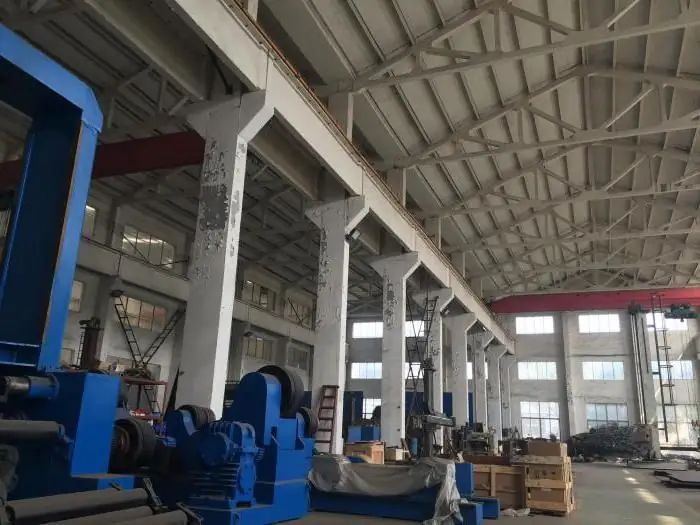2026 Author: Howard Calhoun | [email protected]. Last modified: 2025-01-24 13:10:28
The fixed assets of an enterprise are recognized as material objects used in the production of goods, production of works, provision of services, as well as for management needs. This category includes both exploited assets and assets that are in stock, leased or mothballed.

General characteristics of OS
To register a fixed asset, the useful life must be more than 12 months. In this case, the value of the property does not matter.
Consequently, valuables with a service life of less than a year are not recognized as fixed assets. Does not include fixed assets and inventories, equipment and machinery transferred for installation or to be installed, objects in transit or in the group of unfinished investments.
Important moment
Please note that an object with all its accessories and fixtures is recognized as the main asseteither a structurally separate product designed to perform specific independent functions, or a complex of several mechanisms, assemblies, etc., used to perform certain work. Such a complex is one or more objects of the same or different purposes, having common control, accessories, devices mounted on the same plane, as a result of which each element can perform functions only when interacting with other components, and not independently.
General procedure for registering fixed assets
OS items are accounted for at their original cost. It is calculated as the sum of all actual investments in the construction, acquisition or manufacture of an asset. For accounting of fixed assets, the amounts paid are taken into account:
- under the supply contract (purchase and sale);
- for carrying out work under a work contract or other agreement;
- for the provision of intermediary, consulting, information services related to the acquisition of fixed assets;
- when obtaining rights to property;
- as customs duties;
- for the delivery of the object to the place of operation, including insurance costs;
- in other cases, if they are related to the acquisition, manufacture or construction of fixed assets.
The cost is recognized as the carrying value of the property. It can only be changed during retrofitting, completion, modernization, reconstruction, partial dismantling (liquidation of elements) and duringrevaluation.

Receipt in budgetary organizations
When registering fixed assets, transactions are formed as follows:
Dt sch. 106 01 310 ct sc. 208 00 000 (302 00 000)
Account 106 01 310 summarizes information about all costs associated with the acquisition of property.
VAT in budget accounting
If contractors and suppliers present tax amounts when supplying fixed assets, then they are taken into account either as part of capital investments (acquisition with budget funding or from income-generating activities and not subject to VAT), or they are attributed to the account. 2 210 01 560 "Increase in the amount of VAT receivables for received material assets, services, works" (purchase with funds from income-generating activities subject to VAT).
Reflection of historical cost
Regardless of the way objects are received by the enterprise, the amounts of acquisition costs are summarized on the account. 08. At the time of putting the asset into operation, the initial cost is written off. As a result, when registering a fixed asset, the posting is done as follows:
Dt sch. 01 ct sc. 08
Purchase for a fee
This is the most common way to obtain property. In such cases, the contract of sale and the act of acceptance and transfer are the primary documents for registering the fixed asset. The initial cost is formed, as mentioned above, from all purchase costs, with the exception of VAT andother reimbursable payments. Such a rule is enshrined in PBU 6/01 (clause 8).
To register a fixed asset purchased for a fee, as a rule, the following entries are made:
Dt sch. 08 ct sc. 60 (76 etc.)

Let's consider an example. In accordance with the sale and purchase agreement, the company acquired an asset, the cost of which is 238,950 rubles. (including VAT 36,450 rubles). In addition, services were paid for the delivery of the object to the warehouse - 29 thousand rubles. For clarity, the wiring will be presented in the table.
| Operation | Debit | Credit | Amount |
| Acquiring an object | 08 | 60 | 238,950 RUB - 36,450 rubles.=202500 rub. |
| VAT included | 19 | 60 | 36450 RUB |
| Acceptance of VAT deduction | 68 | 19 | 36450 RUB |
| Acceptance for shipping costs | 08 | 60 | 29k RUB |
| OS commissioning | 01 | 08 | 202500 rub. + 29000 rub.=231500 rub. |
In a similar way (with minor amendments)accounting for fixed assets created by the enterprise itself. In this case, in addition to settlements with contractors, suppliers and other creditors/debtors, other costs that are part of the initial cost are also reflected. We are talking, in particular, about the salary of employees, the cost of materials, depreciation of fixed assets, etc. Accordingly, when registering fixed assets, the following entries will be made:
Dt sch. 08 ct sc. 02 (05, 10, 23, 70, 69, etc.)
In some cases, when forming the initial cost, interest on loans and credits may be taken into account:
Dt sch. 08 ct sc. 66 (67)

Property as an investment
If an enterprise received fixed assets as a contribution to its authorized capital, the initial cost is determined in the form of a monetary value agreed by the founders. Such a rule is provided for by PBU 6/01 (clause 9). Here, however, it should be noted that in an LLC, for example, the amount agreed upon by the founders cannot be higher than the assessment of an independent appraiser, despite the fact that his involvement when receiving a non-monetary contribution to the capital of the company is, in accordance with paragraph 2 of Art. 66.2 CC, mandatory.
When registering a fixed asset transferred as a contribution, the accountant makes the following entry:
Dt sch. 08 ct sc. 75
Please note that when receiving an asset from a VAT payer, the recipient has the right to deduct the tax presented, previously restored by the transferring entity.
Let's consider an example. Let's pretend thatthe enterprise received as a contribution to the capital equipment, estimated by the founders in the amount of 160 thousand rubles. This appraisal was found to be equal to the value set by an independent appraiser. VAT amounted to 23 thousand rubles.
The table shows the entries that an accountant will make when registering a fixed asset.
| Operation | Debit | Credit | Amount |
| Receive equipment as a contribution | 08 | 75 | 160 thousand rubles |
| Accounting for VAT presented by the transferring entity | 19 | 83 | 23 thousand rubles |
| Tax acceptance for deduction | 68 (sub-account "VAT") | 19 | 23 thousand rubles |
| Registering a fixed asset | 01 | 08 | 160 thousand rubles |
Get OS free of charge
When acquiring property under a donation agreement, the market price of the property existing on the date of registration of the fixed asset is taken as the initial cost. In this case, make up the entry:
Dt sch. 08 ct sc. 98
Please note that income from upcoming periods will be included in other income as depreciation payments accrue:
Dt sch. 98 Kt. 91 (sub-account "Otherincome")

For example, a machine was donated to an enterprise, which is supposed to be used in the main production. The market value of the equipment is 218,300 rubles. The useful life of the machine is 37 months. Depreciation is calculated using the straight-line method. In the table, we will reflect the postings that the accountant makes.
| Operation | Debit | Credit | Amount in rubles |
| Receive machine | 08 | 98 | 218300 |
| Acceptance for accounting as part of fixed assets | 01 | 08 | |
| Calculation of monthly depreciation | 20 | 02 | 218300 / 37=5900 |
| Recognition of a part of the income of upcoming periods as income in the current period | 98 | 91 | 5900 |
Obtaining fixed assets under an exchange agreement
The execution of the exchange agreement is carried out in non-monetary ways. In this case, when accepting fixed assets as the initial asset, the price of the values transferred or to be transferred in exchange is recognized. It is usually equal to the cost at which the enterprise sells the relevant objects. If the price of these items cannot be determined,the market value of similar assets is taken into account.
Accountant's entry upon receipt of fixed assets under an exchange agreement, in general, does not differ from posting upon purchase for a fee:
Dt sch. 08 ct sc. 60
At the same time, other entries will be generated for this record, reflecting the sale of property transferred in exchange, as well as the offset of mutual claims.
Let's say an enterprise using OSNO, in exchange for its goods worth 312 thousand rubles. (plus VAT 56,160 rubles) receives equipment from a company located on the simplified tax system. The transaction is recognized as valid - the exchange is equivalent. The cost of finished products is 298 thousand rubles.
| Operation | Debit | Credit | Amount |
| Reflecting revenue from product sales | 62 | 90 | 312,000 + 56,160=RUB 368,160 |
| Write off the cost of finished products | 90 | 43 | 298 thousand rubles |
| Charging VAT on sales | 90 (subaccount "VAT") | 68 (sub-account "VAT") | 56160 RUB |
| Receipt of equipment in exchange for products | 08 | 60 | 368160 RUB |
| Reflection of debt offset under the contract | 60 | 62 | 368160 RUB |
| Acceptance of equipment for accounting as part of OS | 01 | 08 | 368160 RUB |
Unclaimed property
It can be found during inventory. Registration of fixed assets identified during the audit is carried out at the current market price of the objects.

Inventory results are drawn up by approved unified documents. During the inspection of the commission, it is necessary to inspect all the identified property and enter in the inventory:
- Full name.
- Inventory numbers.
- Destination.
- Technical and performance indicators.
If a real estate object is unaccounted for, it is necessary to check whether the enterprise has primary documents certifying ownership.
Reflection of information about the values identified during the inventory is carried out according to Dt c. 01 in correspondence with Kt sc. 91 (sub-account "Other income").
Determination of market value
The price of objects is determined by the enterprise in accordance with the cost in force in the given area in relation to other similar items on the date of posting. Information about the market value of assets is supported by documents or an expert opinion. Many experts agree that it is advisable to determine the price in the manner prescribed for the evaluation of property received free of charge.
Nuance
Accountant can detect an unrecorded OS object even without inventory. How in this case to make its posting?
The registration of such objects is carried out only after the inventory. Accounted for by the OS on the date of verification.
Depreciation on such valuables is carried out in the general manner.
Setting fixed assets on off-balance sheet
Information about some types of property may be reflected in special accounts off the balance sheet. This happens when:
- Transfer / receipt of fixed assets for rent (leasing).
- Acceptance of equipment for installation.
- Depreciation of certain types of fixed assets.
Let's look at each situation briefly.
Rent OS
An enterprise can rent or take fixed assets for use (leasing). At the same time, an agreement and an act confirming the acceptance and transfer are drawn up. Registration of fixed assets transferred/leased is carried out separately from other property.
If the contract does not provide for the redemption of the object, then during the entire period of use the right of ownership remains with the transferring party. Accordingly, this property remains on his balance sheet. There are exceptions to this rule, however. It does not apply in the case of a lease of a company as a single property complex and in case of leasing. In the first case, the fixed asset is reflected in the balance sheet of the receiving entity, in the second case, the balance sheet is kept by the party that is determined by the terms of the contract.

When leasing the object must be put on the balance of the recipient, the lessor reflects information about it off the balance sheet. For this, the account is used. 011. Information here is reflected throughout the entire period of the contract in the amount established by its terms.
After the end of the lease, the object is returned to the balance. It is written off from the account. 011 on account 01 or 03 or to account 41 (if its subsequent sale is provided).
OS depreciation
To reflect it, an off-balance account 010 is used. Information on it is reflected if the property is:
- NPO property;
- object of housing stock, external improvement, shipping situation, road / forestry, if they were taken into account before 2006-01-01
The last provision also applies to productive livestock, domesticated animals.
Depreciation is calculated in a linear way according to dt cf. 010 monthly. The amounts are not included in the costs of the enterprise.
Organizational and administrative documents
One of the key documents that ensure the commissioning of property is an order to register a fixed asset. Normative acts do not fix a unified form of such an order. However, there is a list of information that must be present in this document without fail. Among them:
- Company name.
- Document name.
- Date of compilation.
- Reason for publication.
- Description of the object to beposting.
- Indication that property is included in fixed assets.
- Determining useful life and cost.
- Inventory number of the object. It is indicated in a special card generated for each operating system or group of funds.
- The group or category the property is included in.
- F. Acting employee responsible for the safety of the OS.
- The room/workshop where the asset will be located.
- Signature of the manager or other authorized employee.
- Signature of responsible employee.
An accountant or legal department specialist, as well as an assistant manager can draw up an order.
Appendix to the order is the acceptance certificate.
Assignment of the order
It should be noted that the issuance of an order to register a value is necessary not only for the correct preparation of reports. The order is the basis for drawing up an act on putting the property into operation. Such an act shall indicate:
- Characteristic of the object.
- Description of appearance, technical condition.
- F. Acting employees in charge of operation.
- The level of readiness of the object for use.
This document must be signed by a special commission, which includes the head and chief accountant.
Recommended:
What is depreciation of fixed assets and intangible assets?

The process of accruing depreciation of fixed assets and intangible assets is a very important aspect of accounting in an enterprise. How to calculate depreciation, the management of the enterprise or the entrepreneur decides
What documents to issue the commissioning of fixed assets

The commissioning of fixed assets provides for two necessary stages: the formation of the initial cost and the commissioning itself based on the necessary documentation
Structure and composition of fixed assets. Operation, depreciation and accounting of fixed assets

The composition of fixed assets includes many different assets that are used by the enterprise in its core and non-core activities. Accounting for fixed assets is a difficult task
Posting to fixed assets. Basic accounting entries for fixed assets

The non-current assets of an enterprise play an important role in the production cycle, they are associated with logistics processes, trade, provision of services and many types of work. This type of assets allows the organization to earn income, but for this it is necessary to carefully analyze the composition, structure, cost of each object. Constant monitoring is carried out on the basis of accounting data, which must be reliable. Basic postings on fixed assets are typical
Sale of fixed assets: postings. Accounting for fixed assets

Material base, technical equipment of any enterprise depends on the structure of the main assets. They are an integral part of the production process, they are used in the implementation of all types of economic activity: the provision of services, the performance of work. The use of BPF with maximum efficiency is possible with proper planning of their operation and timely modernization. For a comprehensive analysis of this asset, it is necessary to correctly reflect it in all types of accounting

